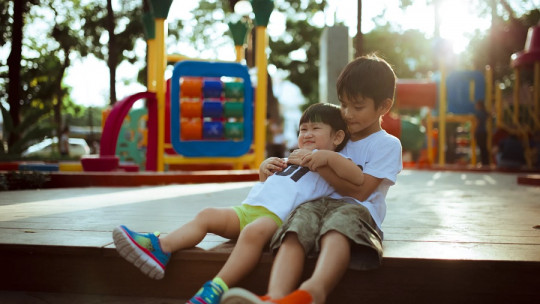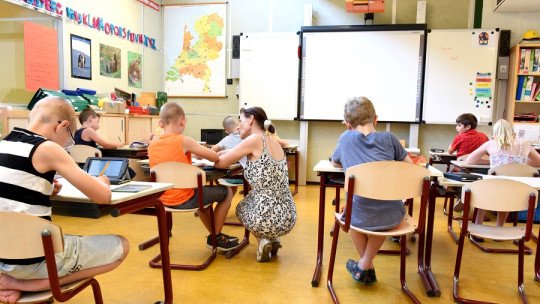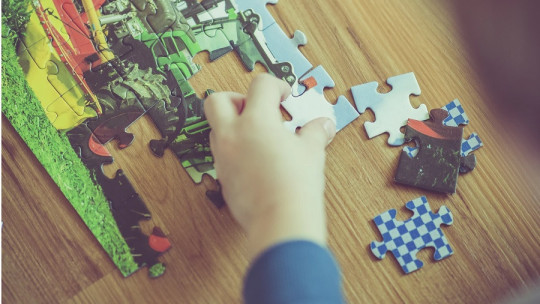Throughout our lives and from birth, human beings do not stop learning. But without a doubt the greatest and most important learning takes place during childhood and adolescence.
One of the most relevant learnings has to do with how to relate to oneself, as well as learning to recognize one’s own thoughts, beliefs and emotions. It is something that requires learning, and in some cases there may be difficulties in recognizing and managing one’s own emotions.
How to help children recognize their emotions? Throughout this article we are going to see some propositions or strategies that can be useful in this regard.
Emotion and recognition of emotions
We call emotions those subjective reactions of a physiological-cognitive-behavioral nature that arise from the confrontation of internal stimulations (bodily sensations, thoughts or ideas) or external ones (events that come from the environment) and whose main function is to direct or alter our behavior in order to achieve our adaptation and survival.
Emotions have a neurobiological origin and have their origin in the activation of the limbic system, but are also strongly influenced by our life experiences and learning.
In fact, as we have mentioned, these are reactions to what happens in our lives, which activate our body and predispose us to action, motivating us and encouraging us to act in a certain way and in turn allowing us to bond with others. .
Emotions generally appear suddenly and innately and for a short period of time, and allow us to give some type of value to what happens to us. We often divide them into positive, negative or neutral depending on the type of activation or sensations they generate in us (such as joy, sadness or surprise), but all of them are deeply adaptive to us and have allowed our species to have developed and survived until now.
They differ from feelings in that they are maintained over time and they arise from the awareness and cognitive elaboration of emotions and their connection with the causes of their appearance.
We can find and experience a great diversity of emotions, and many of them have characteristics or ways of expressing themselves that sometimes mean they can be confused with each other.
Throughout our development and as we experience them, these emotions become increasingly easier to recognize, but the truth is that the mere recognition of one’s own emotions is a skill that requires training, and for which help may be needed. external.
The recognition of emotions would fall within the basic cognitive skill known as emotional awareness which is defined as the ability to capture and recognize one’s own and others’ emotions and be able to classify and identify them with a name or within a basic category.
Emotional awareness is one of the main components sought by emotional education, which allows us to confront day-to-day problems, be able to understand, react and adapt to the environment and generate a healthy identity and self-esteem.
How to help children recognize their emotions?
Emotional awareness or recognition of one’s own emotions is a basic skill that generally develops naturally from childhood but it requires a learning process in which the provision of external support could be useful.
Unfortunately, in the usual formal education there is generally little support for the development or training of this skill, so often the ability to recognize emotions can be relegated as something secondary and that depends more on the subject himself and the experiences and learnings acquired from family and friends. But it can be reinforced.
Below we provide you Some examples of ways we can help children recognize their emotions through everyday learning.
1. Talk about emotions
In order to recognize emotions, it is very important to first know what we call joy, sadness, anger, disgust, fear or surprise.
In this sense, it is useful for the minor to be able to speak freely with adults or people in the environment about their sensations and desires, and what they notice in different situations, in order to be able to give a name to the sensation itself.
It is important that if we define an emotion we do so in a simple and understandable way for the level of evolutionary development of the minor Without using very abstract concepts and using examples.
2. Give examples of situations in which they may appear
As also happens in adulthood, using examples can allow the child to understand what a certain emotion implies. It may be especially useful to describe situations in which it is common to feel each of the emotions.
Now, it must be taken into account that the same situation can provoke different emotional reactions in different people.
3. Facial expressions: emoticons, photographs and drawings
A classic way to train emotion recognition is to identifying facial expressions in drawn faces or photographs They do not need to be highly complex, but simply that the type of gestures carried out when experiencing an emotion can be observed.
4. Mimic and imitation
Just as important as seeing them can be learning how we express them ourselves. It may be useful to rehearse with the child different ways and gestures that we make when feeling a specific emotion, so that the child imitates them and can recognize some of the physical sensations that his or her body carries out when feeling a certain emotion.
One method that may be useful is rehearse faces and gestures both accompanied by an adult and in front of a mirror
The free physical representation of the sensations felt by the minor is also very useful, so that the child himself tries to express the sensations generated by the emotion What do you feel.
5. Videos and movies
All or almost all children like to watch children’s films, and this is something highly beneficial if we take into account that most of them feature characters who feel different emotions and situations that can provoke them in the children themselves.
It is possible to use this type of stimulation, which also pleases them and is reinforcing, in order for them to begin to learn to intellectually internalize emotional situations and even to identify emotions or physical expressions that reveal the existence of a specific emotion.
It is especially useful to use films that are meaningful to you, although there are also various short films that can be useful.
6. Express feelings with words
Although describing an emotion is something that can be difficult at any age, one way to learn what emotions we are feeling is to try to express them in words. In this sense, it may be useful for the adults in charge to express both through gestures and words how they feel or the type of stimulation that generates a specific emotional reaction.
7. Do not recriminate or censor an emotion
Although we often divide emotions into positive and negative, the truth is that each and every one of them has a function and it is necessary to learn to recognize them. It is important do not censor emotions or their expression or make them believe that it is wrong to feel a certain way an otherwise quite common error.
It is not about motivating them to have tantrums or get their way, but to make them understand that feeling angry is not bad per se, or being sad. They are natural emotions that they must learn to interpret and recognize in order to later be able to manage.
8. Dramatize situations that generate emotions
Another way that can be useful to learn to recognize one’s own emotions is to do simulations and theatrical representations of situations that generally tend to provoke an emotion such as anger, joy, sadness or surprise.
This helps the child experience emotion, and Afterwards you can reflect on how you felt and what type of sensations it has generated on a physiological or mental level.
9. Describe situations in such a way that they can say what they would feel
As ethical dilemmas, the description of emotional situations can be used to ask the minors what they would feel in that situation Although the answer does not have to be exact, reflecting on what sensations they would provoke can lead children to learn to identify their emotions more easily in similar situations.









